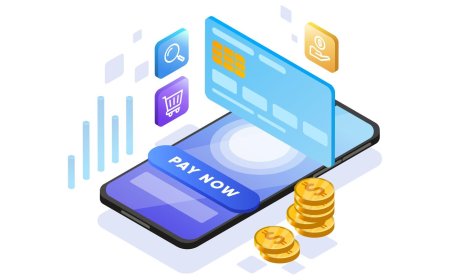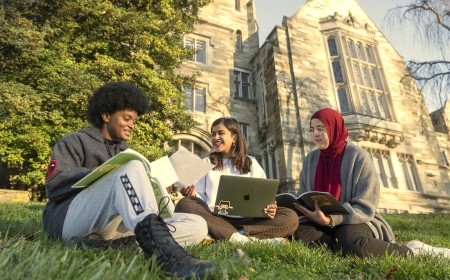AI Tutors & Virtual Classrooms Redefine Learning 2025
AI tutors and virtual classrooms transform education in 2025, offering personalized learning, real-time feedback, and global access to quality instruction.
Education is changing rapidly in 2025, driven by the fast adoption of artificial intelligence and digital platforms. Traditional classrooms are being replaced with virtual ones, and AI tutors are helping students get personalized support like never before. Many learners now prefer flexible online setups that adjust to their pace, needs, and time. Even industries unrelated to education, like those that shop vape products or operate online retail, are embracing similar adaptive technologies. The role of technology in learning is no longer optionalit's a core part of education's future.

Rise of AI Tutors in Mainstream Learning
AI tutors are software systems designed to mimic human tutoring by delivering personalized learning experiences to students. These platforms are equipped with natural language processing, machine learning, and adaptive learning technologies to:
-
Understand a students level of comprehension
-
Suggest learning paths based on performance
-
Provide instant feedback and corrections
-
Track progress in real time
-
Offer support across multiple subjects
-
Encourage self-paced learning
These tools are already in use across schools, universities, and online learning portals. Students in remote or underserved regions now have access to expert-level help anytime, removing barriers previously caused by geographic or economic limitations.
Virtual Classrooms and Real-Time Learning Environments
In 2025, virtual classrooms are more than just video conferencing tools. They are immersive digital environments where students can attend live sessions, participate in group discussions, take quizzes, and interact with contentall from a single dashboard. Features of modern virtual classrooms include:
-
Interactive whiteboards
-
Real-time collaboration tools
-
AI-powered attendance and participation tracking
-
Integration with cloud storage for assignments and notes
-
Speech-to-text transcription
-
Automatic grading systems
Virtual classrooms support synchronous and asynchronous learning, meaning students can attend live or access recordings later. This flexibility benefits learners juggling work, caregiving, or other responsibilities.
Benefits for Teachers and Institutions
While much focus is on how students benefit, AI and virtual classrooms also assist educators. Teachers can now manage their classrooms more efficiently using intelligent dashboards that provide insights like:
-
Which students need extra help
-
Which topics are challenging to most students
-
Automated test results and performance analytics
-
Time-saving automation for lesson planning and grading
-
Secure cloud storage for academic records
-
Communication tools for engaging parents and guardians
Institutions can scale their programs to reach more students without compromising quality. They also benefit from lower infrastructure costs by reducing the need for physical classroom space and printed materials.
Real-World Use Cases and Platforms
Several AI-driven platforms and virtual learning tools are now widely used in education. Some examples include:
-
Socratic by Google Uses AI to help students solve homework problems using just a photo.
-
Khanmigo by Khan Academy A virtual tutor built on GPT technology that supports interactive learning.
-
BYJUS FutureSchool Offers real-time coding and math classes powered by AI.
-
Edmodo and Moodle Virtual learning environments that integrate AI for engagement and tracking.
-
Carnegie Learning Delivers AI-driven math tutoring based on student data patterns.
These platforms are not replacing teachers but enhancing their ability to deliver effective and personalized education.
Skill Development Beyond the Classroom
AI and virtual learning platforms are not just for formal educationthey are helping people of all ages gain real-world skills. Online certifications, coding bootcamps, and virtual internships allow learners to grow professionally without leaving home. Key advantages include:
-
Access to global content and expert instructors
-
Personalized course recommendations
-
Microlearning formats for busy learners
-
Gamified learning to improve retention
-
AI-curated career paths based on individual interests
This approach supports lifelong learning, helping workers reskill and upskill in a fast-changing job market.
Equipping the Next Generation
One of the biggest impacts of AI tutors and virtual classrooms is their ability to nurture critical 21st-century skills in students. These include:
-
Problem-solving and critical thinking
-
Digital literacy and tech adaptability
-
Time management and self-motivation
-
Collaboration through online platforms
-
Communication across diverse formats
By embedding these soft and hard skills in the learning process, AI and virtual classrooms are preparing students for careers that dont even exist yet. Institutions are integrating these tools not just for academics, but also for mental health support and peer mentoring.
The Future Outlook: More Access, More Inclusion
The future of learning is about access and inclusion. AI tutors break language barriers through real-time translation. Virtual classrooms provide features for differently-abled learners like screen readers, captioning, and adjustable interfaces. Governments and non-profits are partnering with EdTech firms to distribute affordable learning tools, especially in remote and low-income areas.
We are seeing education reach learners in ways that were not possible just a few years ago. From rural villages to urban centers, students now have the opportunity to engage with quality education regardless of where they live or what resources they have.
And as more students and teachers adapt to these tools, the environment becomes more personalized, responsive, and engagingmaking learning feel less like a chore and more like a guided exploration.
In this evolving world, even lifestyle shifts are being influenced by digital convenience. A vaper smok user, for instance, may use the same AI recommendation engine for product suggestions that a student uses for learning plansshowing how adaptive AI fits into many corners of our lives, including education.
Summary and Final Thoughts
AI tutors and virtual classrooms are not just trendsthey are shaping the way we learn and teach in 2025. They offer personalization, access, efficiency, and scalability. Students gain flexibility, teachers get better tools, and institutions expand their reach. With ongoing development and increased integration into everyday life, this technology is ensuring education becomes more inclusive and practical for everyone.
Education in 2025 is about learning smarter, not harder. Whether you're a child in school, a college student, or an adult learner, the tools you need are just a few clicks away.




























